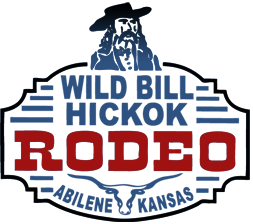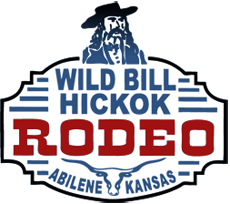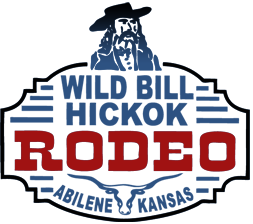The Wild Bill Hickok Rodeo, named one of the top 5 professional outdoor rodeos in America for 1995, 2001, 2002, 2010, 2011 and 2016; and the Top Large Outdoor Rodeo in the Prairie Circuit for 2003, brings you America’s original extreme sport. The 2023 rodeo had a record number of 643 entries with a payout of over $90,000. Cowboys and cowgirls compete for over $40,000 in added prize money.
Nearly 500 cowboys and cowgirls, world champions and the “young gun” contenders alike, make their way to Abilene each year to compete for prize money and the hopes of adding points to qualify for the National Finals Rodeo.






